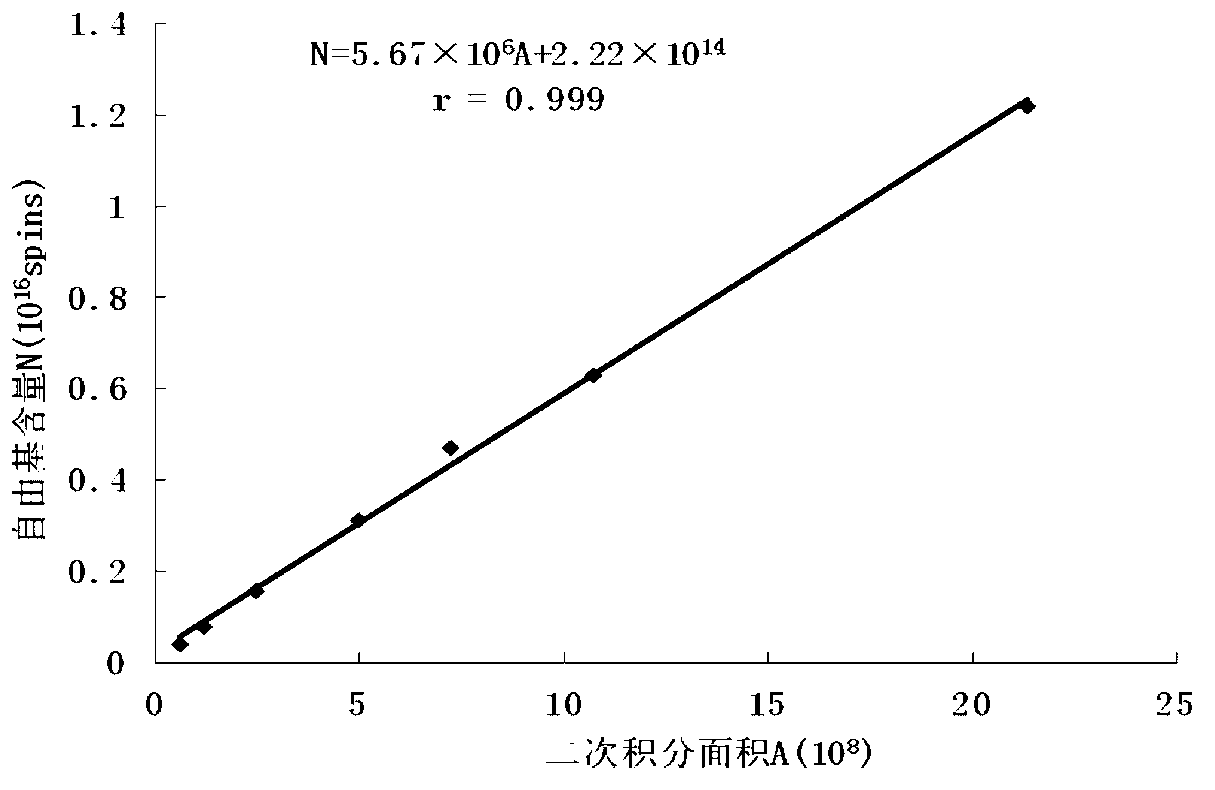Method for detecting free radical ration in coal tar
A quantitative detection and free radical technology, applied in the direction of electron paramagnetic resonance analysis, etc., can solve the problems of containing a certain amount of water, difficult sample loading, low free radical content, etc., and achieve the effect of simple and easy quantitative detection method
- Summary
- Abstract
- Description
- Claims
- Application Information
AI Technical Summary
Problems solved by technology
Method used
Image
Examples
Embodiment 1
[0028] Quantitative determination of free radicals in Huainan coal pyrolysis tar.
[0029] 1) Treatment of tar samples
[0030] The tar produced after coal pyrolysis is subjected to high-speed centrifugation to separate the upper layer of tar from water.
[0031] Tar contains a certain amount of water, and water will absorb microwaves and affect the determination of EPR. Therefore, the tar produced by coal pyrolysis needs to remove water first. at 8000r / min) to quickly remove the moisture in the tar.
[0032] 2) Preservation of tar samples
[0033] The upper layer of tar was stored under a nitrogen atmosphere for determination.
[0034] The free radicals in the tar are unstable and will change with the storage time. Due to the limitation of the measurement conditions, most experimenters cannot measure the EPR immediately after the tar is produced, so the storage conditions of the tar are very important. The present invention has investigated the influence of factors such a...
PUM
 Login to View More
Login to View More Abstract
Description
Claims
Application Information
 Login to View More
Login to View More - R&D
- Intellectual Property
- Life Sciences
- Materials
- Tech Scout
- Unparalleled Data Quality
- Higher Quality Content
- 60% Fewer Hallucinations
Browse by: Latest US Patents, China's latest patents, Technical Efficacy Thesaurus, Application Domain, Technology Topic, Popular Technical Reports.
© 2025 PatSnap. All rights reserved.Legal|Privacy policy|Modern Slavery Act Transparency Statement|Sitemap|About US| Contact US: help@patsnap.com

